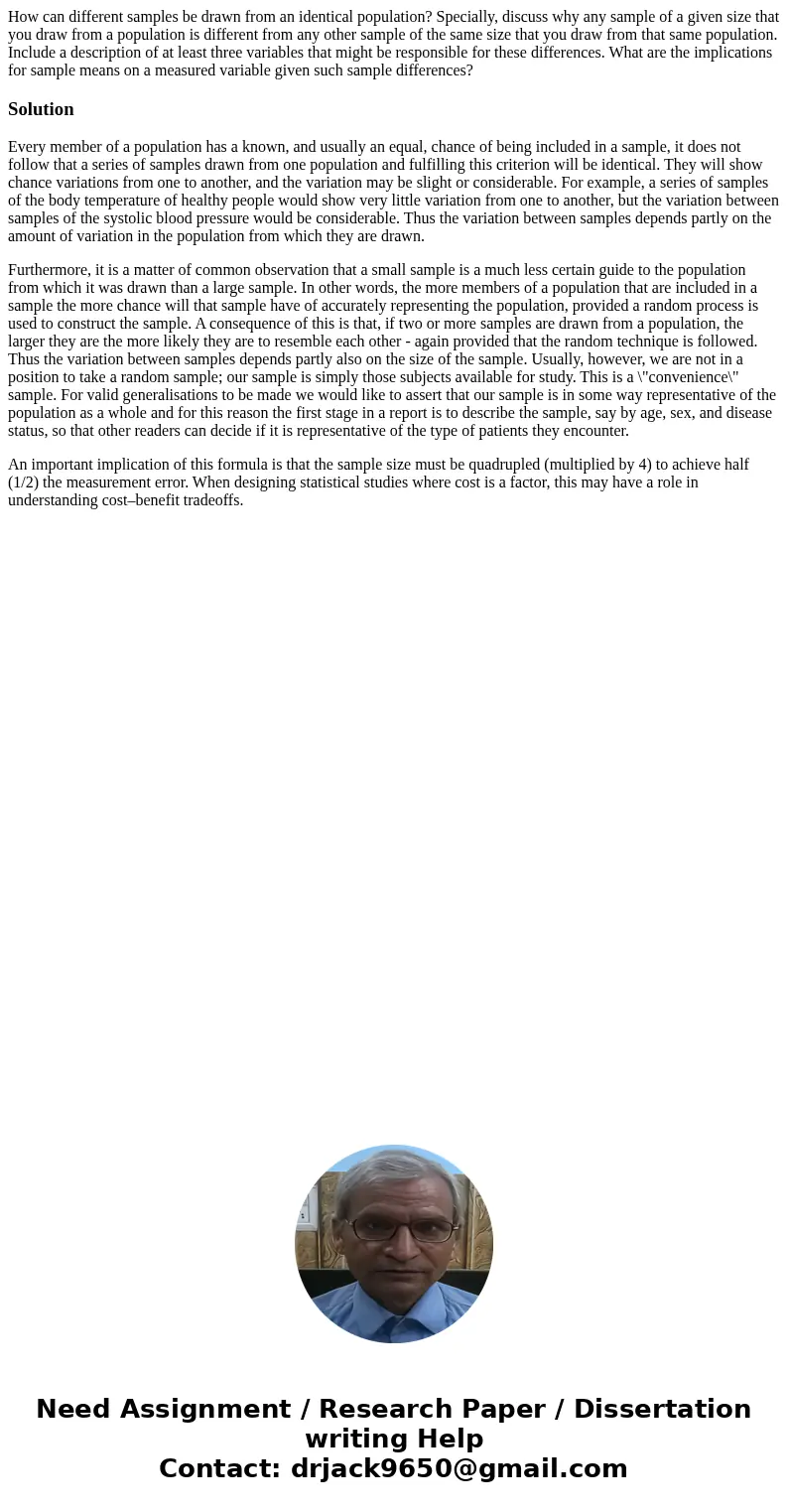How can different samples be drawn from an identical populat
How can different samples be drawn from an identical population? Specially, discuss why any sample of a given size that you draw from a population is different from any other sample of the same size that you draw from that same population. Include a description of at least three variables that might be responsible for these differences. What are the implications for sample means on a measured variable given such sample differences?
Solution
Every member of a population has a known, and usually an equal, chance of being included in a sample, it does not follow that a series of samples drawn from one population and fulfilling this criterion will be identical. They will show chance variations from one to another, and the variation may be slight or considerable. For example, a series of samples of the body temperature of healthy people would show very little variation from one to another, but the variation between samples of the systolic blood pressure would be considerable. Thus the variation between samples depends partly on the amount of variation in the population from which they are drawn.
Furthermore, it is a matter of common observation that a small sample is a much less certain guide to the population from which it was drawn than a large sample. In other words, the more members of a population that are included in a sample the more chance will that sample have of accurately representing the population, provided a random process is used to construct the sample. A consequence of this is that, if two or more samples are drawn from a population, the larger they are the more likely they are to resemble each other - again provided that the random technique is followed. Thus the variation between samples depends partly also on the size of the sample. Usually, however, we are not in a position to take a random sample; our sample is simply those subjects available for study. This is a \"convenience\" sample. For valid generalisations to be made we would like to assert that our sample is in some way representative of the population as a whole and for this reason the first stage in a report is to describe the sample, say by age, sex, and disease status, so that other readers can decide if it is representative of the type of patients they encounter.
An important implication of this formula is that the sample size must be quadrupled (multiplied by 4) to achieve half (1/2) the measurement error. When designing statistical studies where cost is a factor, this may have a role in understanding cost–benefit tradeoffs.

 Homework Sourse
Homework Sourse